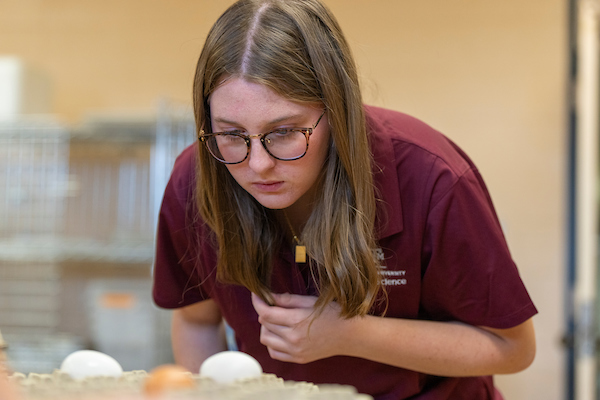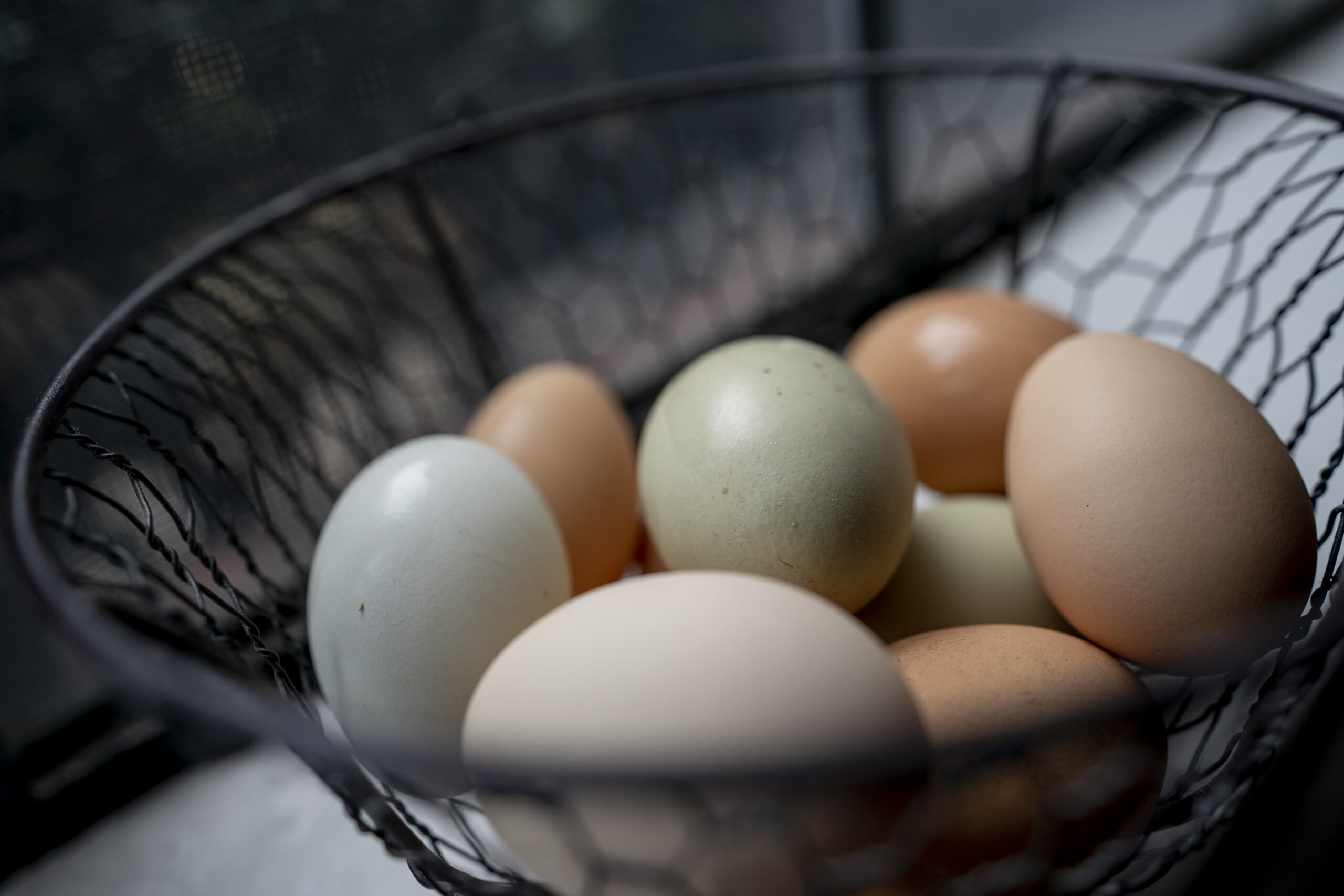Five things to know about raising backyard chickens
AgriLife Extension poultry expert shares essential tips for a healthy, happy flock
With the rising cost of eggs, more people may be considering raising backyard chickens for fresh, homegrown eggs. However, caring for a flock requires more than just setting up a coop.
Greg Archer, Ph.D., Texas A&M AgriLife Extension Service poultry specialist and associate professor in the Texas A&M Department of Poultry Science, Bryan-College Station, shares what aspiring backyard chicken owners should know before getting started.

1. Raising chickens requires a significant investment of time and money
Before bringing home your first chicks, consider how much time, effort and money you want to invest.
“A lot of time and labor get put into raising backyard chickens, as well as supplies,” Archer said. “People don’t necessarily think about how much that may cost.”
Between feed, coop materials, bedding and potential medical costs, raising chickens can add up. The idea of saving money on eggs can be appealing. However, buying eggs at the store may be a more cost-effective option for many.
If you’re serious about raising your own backyard brood, take a look at AgriLife Extension’s online resources to help you get started.
2. Choosing the right chicken breeds and caring for chicks
Backyard flocks often start with baby chicks, which require special care in their first few weeks. Archer suggested starting them out in a warm, draft-free brooding area, especially during the winter.
“You have to consider the time of year when you are getting your chicks,” he said. “Will it be warm enough for you to keep them outside? Would they be warmer in your garage? I’ve even heard of some people putting them in the bathtub.”
Because chicks cannot regulate their body heat for the first two to three weeks of life, they need a heat source such as a heat lamp or brooder plate, Archer said. Chicks should be kept cozy, at around 90-95 degrees their first week. After that, the temperature should be lowered by five degrees each week.
The transition to outdoor living depends on their age, how soon they grow their adult feathers and climate.
Speaking of climate, it is a key consideration when choosing the right chicken breeds. Many chickens are tough and can survive a wide variety of temperatures, which is vital in the Texas climate.
Some breeds suitable for Texas include Leghorns, Plymouth Rocks, Wyandottes and Orpingtons, Archer said. On the other hand, heat-sensitive breeds like Jersey Giants don’t thrive under the hot Texas sun. Be sure to select chickens that are well suited to your location.
3. Proper coop setup and care for adults
Backyard chickens need a safe, spacious and well-ventilated coop. A good rule of thumb is approximately 2 to 4 square feet per bird, at a minimum. Choose a sturdy base material, such as wire, strong enough to protect the birds from predators. Stay away from using porous or painted material for the base, as they’re harder to sanitize. Metal bases should have a thermal break between the material and your birds.
They’ll also need a roosting area with an elevated perch in a chicken coop. Perches should ideally be around 18 inches high, where chickens naturally prefer to sleep.
Once set up, good coop maintenance practices include:
- Clean bedding: Replace shavings weekly and keep the coop dry.
- Daily cleaning: Shovel waste and refresh food and water.
- Fresh feed: Buy feed one bag at a time to maintain freshness.
4. Chicken safety and protection from predators and disease
Before bringing a flock home, it is important to learn as much as you can about predators and disease prevention in poultry.
“I tell people to think, ‘what can go wrong, and how can I prevent that?’” Archer said.
He offered advice on predators and disease – major health and safety risks that flock owners should prepare for.
Both backyard chickens and their eggs attract nearby predators who eat one or both, such as raccoons, foxes and even household pets. A secure coop and run help deter unwanted visitors.
Additionally, avian influenza, HPAI, remains a significant concern for poultry owners. Since 2020, the virus has impacted both commercial and backyard flocks.
“People need to know it’s going to be around for a while,” he said. “Unless we can figure out how to stop it, it’s not going anywhere.”
To protect your flock against illnesses like avian influenza or other common diseases like salmonella, Archer suggests:
- Limit contact with wild birds, especially migratory waterfowl.
- Secure feed and water from wild birds to prevent contamination.
- Practice good hygiene, including frequent handwashing after touching chickens or collecting eggs.
5. Have fun and be responsible with your backyard flock
Archer’s final parting thought is while, yes, backyard flocks are often a lot more work than people may realize when they first start, they can be incredibly rewarding.
“They can be really fulfilling, and you can have fun with it,” he said. “Many people enjoy caring for their own flock, whether for egg production, sustainability or a fun family activity.”
Backyard Chicken Resources
Get expert guidance on small-scale poultry operations, backyard flocks and disease prevention from AgriLife Extension. Explore a vast collection of resources to help you raise a thriving flock with confidence.






